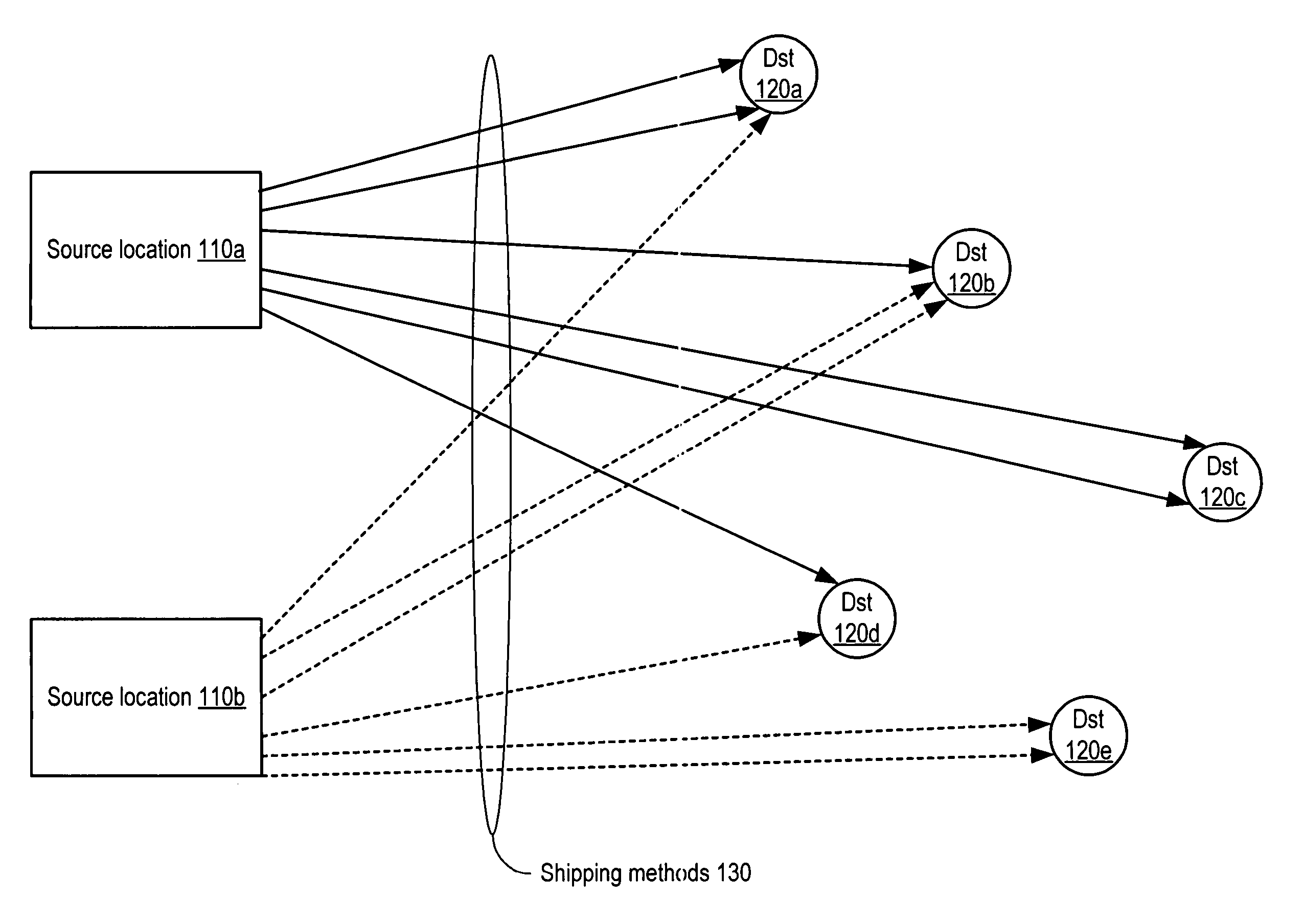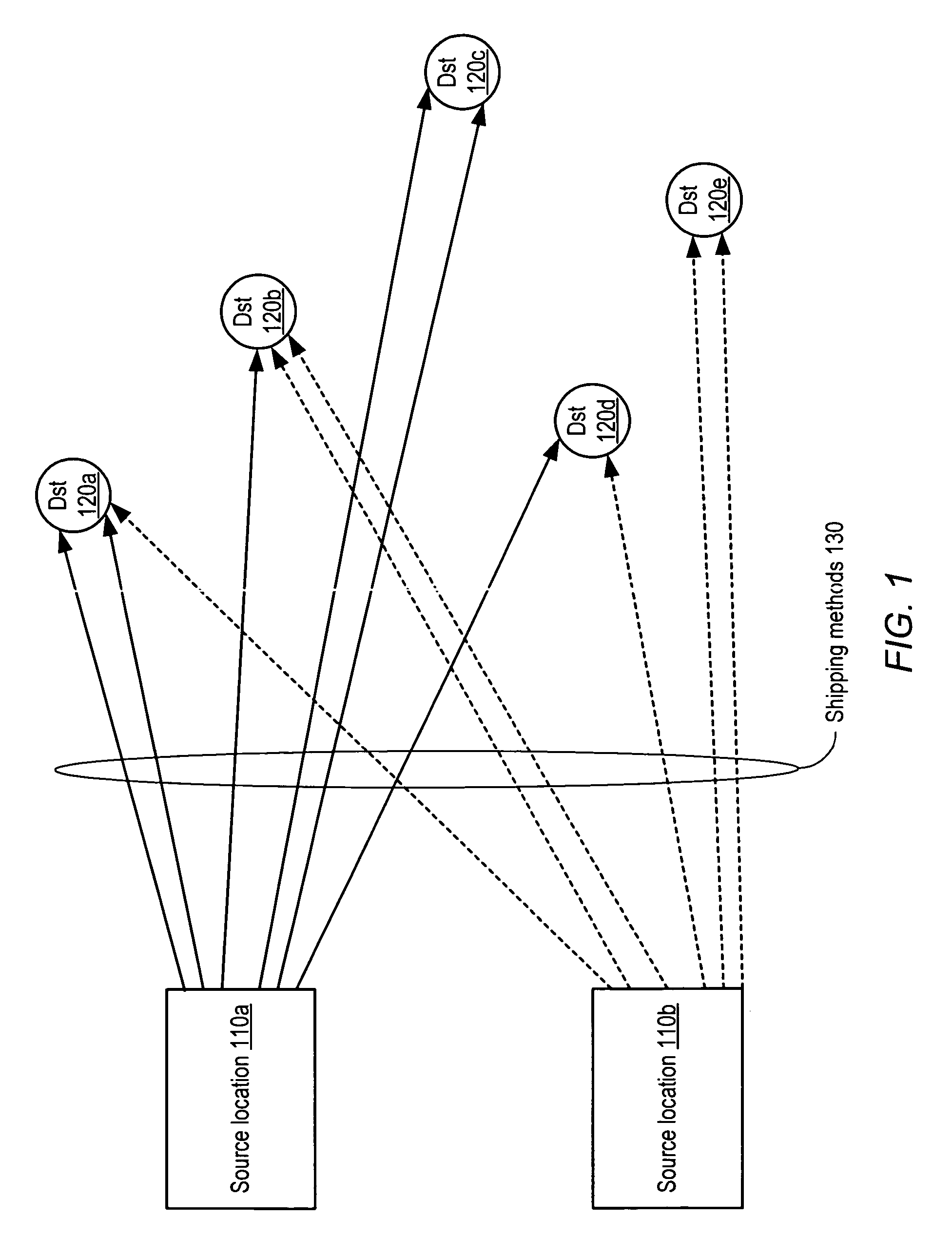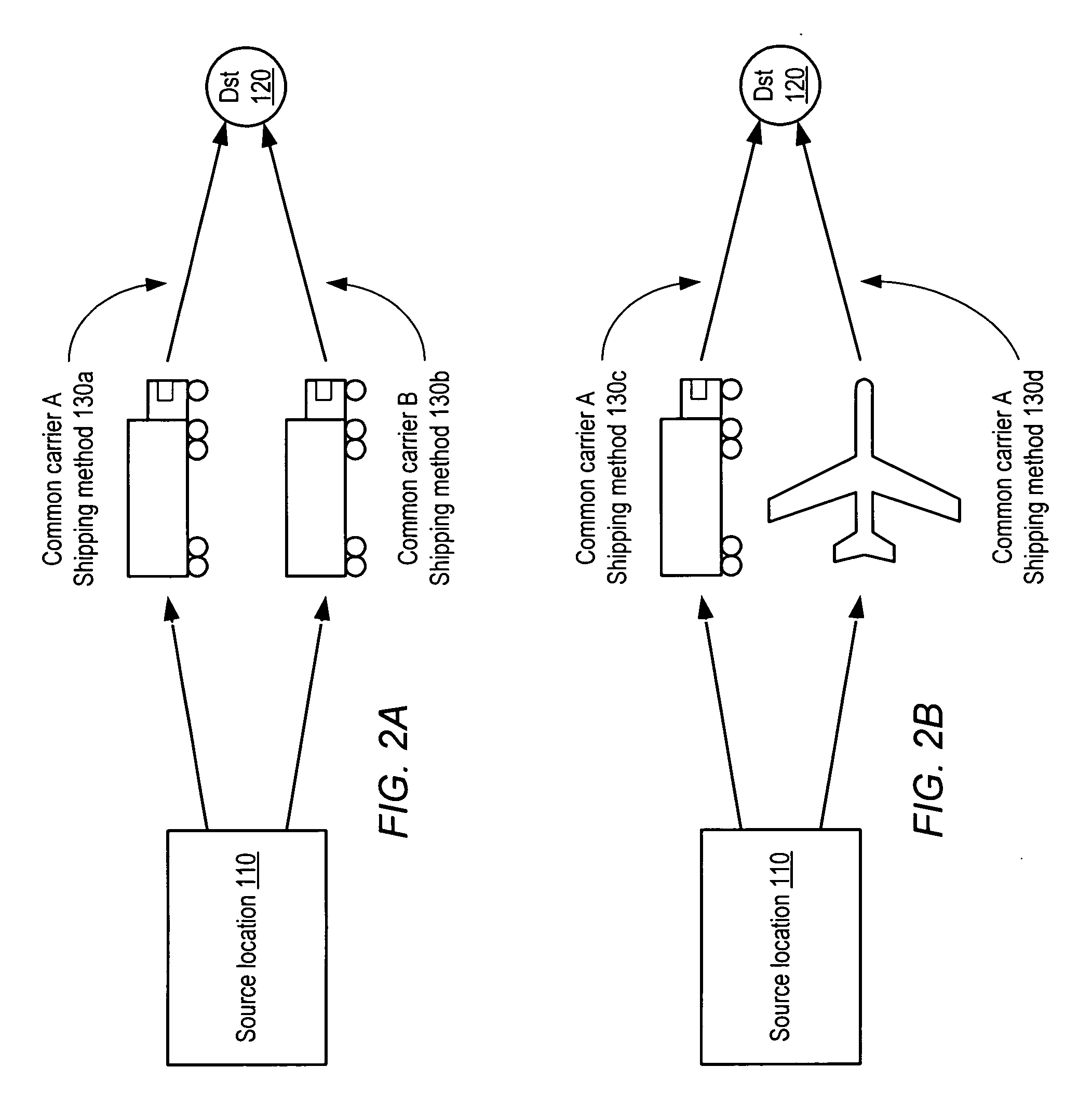Method and system for transit characteristic prediction
a transit characteristic and prediction method technology, applied in the field of transit logistics, can solve problems such as loss of productivity, logistical, facilities and overhead costs, and missed production deadlines
- Summary
- Abstract
- Description
- Claims
- Application Information
AI Technical Summary
Problems solved by technology
Method used
Image
Examples
Embodiment Construction
Introduction
[0022] As mentioned above, modeling transit time or other transit characteristics between individual source and destination locations may quickly become intractable as the number of sources and destinations increases, e.g., to a global geographical scale. In the discussion below, a method for grouping destination locations into geographical regions according to similarity of transit times to those destinations from a source location is described. Rather than predicting and managing transit paths to individual destinations, such paths may be predicted on a region-by-region basis, which may dramatically reduce the complexity of the data required while preserving accuracy and flexibility in prediction. For example, in one, embodiment the transit time from a source to a given region may be modeled as a probability distribution rather than a single, static value, which may enable a more sophisticated analysis of possible transit scenarios to the given region.
[0023] In the ...
PUM
 Login to View More
Login to View More Abstract
Description
Claims
Application Information
 Login to View More
Login to View More - R&D
- Intellectual Property
- Life Sciences
- Materials
- Tech Scout
- Unparalleled Data Quality
- Higher Quality Content
- 60% Fewer Hallucinations
Browse by: Latest US Patents, China's latest patents, Technical Efficacy Thesaurus, Application Domain, Technology Topic, Popular Technical Reports.
© 2025 PatSnap. All rights reserved.Legal|Privacy policy|Modern Slavery Act Transparency Statement|Sitemap|About US| Contact US: help@patsnap.com



